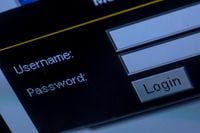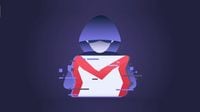Gmail users around the world are being urged to take immediate action after a massive data breach exposed the passwords of more than 183 million accounts, according to cybersecurity experts and multiple news outlets. The breach, which came to light on October 27, 2025, has sent shockwaves through the digital community, given Gmail’s status as the email provider of choice for approximately 2 billion people globally.
The incident, first revealed by Australian cyber expert Troy Hunt on his Have I Been Pwned (HIBP) website, actually occurred in April 2025. However, the true scale of the breach was only recently disclosed, and it’s staggering: 3.5 terabytes of stolen data, an amount equivalent to 875 full-length HD movies, according to the Daily Mail. This cache includes not only email addresses but also the passwords associated with them and the websites where those credentials were used.
Hunt described the breach as a "vast corpus" of compromised information, with Gmail featuring heavily among the affected providers. But it’s not just Gmail users at risk—Outlook, Yahoo, and other major email services were also swept up in the incident. "They're from everywhere you could imagine, but Gmail always features heavily," Hunt told the Daily Mail.
So, how did this happen? Unlike a traditional, single-point breach, this incident is the result of what experts call "stealer logs"—malware-generated files that capture and compile login credentials from infected computers. Hunt explained on his blog, "Stealer logs are more of a firehose of data that's just constantly spewing personal info all over the place. Once the bad guys have your data, it often replicates over and over again via numerous channels and platforms." The origin of the malware and those responsible remain unknown, adding another layer of unease to the situation.
The full extent of the breach was revealed when the stolen data—including 183 million unique email addresses—was added to the HIBP database. According to Forbes Business, the breach involved a staggering 23 billion records, much of which was sourced from the Synthient threat-intelligence project. This year-long initiative tracked the activities of infostealers, aggregating data from hacker forums, social media, Telegram channels, and the dark web. While 92 percent of the compromised credentials came from previous breaches, 8 percent—about 16.4 million records—were entirely new, making this incident particularly alarming for those affected.
Benjamin Brundage, a college student and cybersecurity researcher with Synthient, was the first to discover the breached data and provided it to Hunt’s HIBP platform. Brundage cautioned users against assuming that strong passwords alone would keep them safe. "A strong password is at least 16 characters long and includes a mix of capital and lowercase letters as well as numbers and symbols," he told the Daily Mail. But, as this breach shows, even robust credentials are vulnerable if malware is involved.
The implications go far beyond compromised email accounts. Many people use the same password across multiple platforms—think Amazon, eBay, Netflix, and even online banking and cloud storage. As Hunt warned, "Stealer logs expose the credentials you enter into websites you visit then login to." This means that if your email address appears in the HIBP database, it’s not just your email password you need to worry about. Any site where you’ve reused that password could now be at risk.
Security blogger Graham Cluley echoed this concern, urging people to use unique passwords for every account. "You won't be able to remember them by yourself, so use a password manager to do it for you," Cluley advised the Daily Mail. He also recommended enabling multi-factor authentication (MFA) wherever possible. "Always enable multi-factor authentication when available for a higher level of protection. We're not talking about one company getting hacked, but millions of people unknowingly having their passwords stolen through malware. With 183 million email addresses exposed, it's possible that many people could be caught up in this without even realising their computers have been compromised."
Google, whose users make up a significant portion of those affected, has responded to the breach with a series of recommendations and reassurances. In a statement to Forbes Business, a Google spokesperson said, "This report covers known infostealer [malware] activity that targets many different types of internet activity. There is not a new, Gmail-specific attack at play. We protect users from these attacks with layers of defenses, including resetting passwords when we come across credential theft like this. We encourage users to boost their own defenses by turning on 2-step verification and adopting passkeys as a simpler and stronger alternative to passwords."
Google further advised users who believe their accounts may be compromised to check their account activity immediately and, if unable to log in, to use the account recovery process. The company also pointed users to its Help Centre, where tools like Password Checkup and Google Password Manager can help identify compromised credentials. "We’ll ask you to change your Google Account password if it might be unsafe, even if you don’t use Password Checkup," the spokesperson added. "Additionally, to help users, we have a process for resetting passwords when we come across large credential dumps such as this."
If you’re worried about your own account, the first step is to visit the Have I Been Pwned website and enter your email address. The site will indicate whether your credentials have appeared in any known breaches, including this most recent one. If your email is listed, experts universally agree: change your password immediately and enable two-factor authentication if you haven’t already. And don’t stop there—update passwords on any other sites where you’ve used the same login details.
For those looking to shore up their digital defenses, experts recommend a few key steps. Use a password manager to generate and store unique, complex passwords for every service. Enable two-factor authentication (or even better, passkeys, where available) to add an extra layer of security. And remain vigilant for signs of suspicious account activity, such as unexpected password reset emails or login alerts from unfamiliar devices.
While the breach is a sobering reminder of the risks inherent in our increasingly digital lives, it also serves as a wake-up call. As Hunt put it, "Once the bad guys have your data, it often replicates over and over again via numerous channels and platforms." The best defense, it seems, is a proactive one—so don’t wait until it’s too late to secure your accounts.
As the dust settles, millions are now left to pick up the pieces, reassess their online habits, and take the necessary steps to protect themselves in a world where cyber threats are always lurking just a click away.

